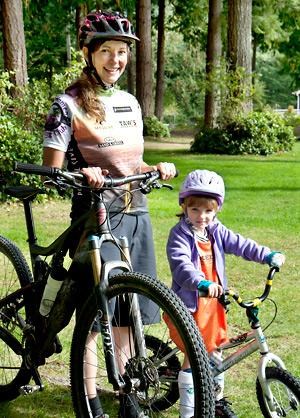When Joshua Chernoff thinks about what it means to be a healthy person, good food and physical health are the words that come to mind. Josh is 13 years old and a new student to Brooks Secondary School this year.
“I like PE [Physical Education],” he says of his new school. “We’re doing a lot of activities, like a once-a-week run; we sometimes go up to the weight room and do reps up there, and we are also doing volleyball and soccer. There are some groups I have joined, like cross country and volleyball. I like that you get to travel and that you get to compete against other schools.”
Josh is a very active teen and that’s a continuing trend from his childhood. When asked why, he says, “It makes you feel good, and it makes you want to go out and do more stuff.”
Josh has been vegetarian all his life, and his parents have always focused on healthy eating for the whole family.
“My parents have always talked to me about foods that are good for you,” he says. “They’ve shown me videos—like Forks Over Knives, Food Inc. and Super Size Me—about why the foods we eat are healthy. We sometimes talk about food at the dinner table when we’re eating something new and occasionally we cook together, too.”
Good nutrition, regular physical activity and adequate sleep are keys to good physical health for people of any age. The importance of parents or caregivers modelling and encouraging the development of good habits for young people in all three of these areas cannot be overstated, says Powell River Public Health nurse Shereen Russell. “Good behaviour can be modelled through a child’s parents or their family, depending on who they’re around most.”
Dr. Leta Burechailo works with Russell as the main physician involved in public health’s Youth Clinic, which supports teens regarding health-related issues. She agrees there is a transfer of knowledge that occurs through modelling. “Basically, that conversation should start in the family as early as a child is starting to make his/her own decisions about what they’re putting into their body…about what healthy food is, what it looks like, what it tastes like, why a child would choose to eat broccoli when it might not taste as good as a white bun.”
When children develop good habits in terms of physical activity, nutrition and sleep routines, they are not only more likely to carry those behaviours into adulthood, resulting in a much healthier life overall, but there are biological advantages as well, Burechailo continues.
“There’s this emerging field called epigenetics that looks at how our environmental experiences can alter how our genes manifest in our bodies, particularly when these ‘exposures’ occur early in life, even in the womb,” she says.
“This field offers even more biological reasons to pay attention to family and child nutrition and activity,” Burechailo adds. “For example, epigenetic studies are trying to explain links between a mother’s nutrition status in pregnancy and her baby’s long-term risk of obesity, diabetes, heart disease, et cetera—and understand what changes happen on that baby’s gene level and if these changes are in turn passed on to next generations.
“This is incredibly complex,” she admits, “but the underlying notions are simple: health and wellness starts at day one, and supporting families and kids in healthy lifestyles promotes wellness in the moment, as well as decades into the future.”
Nutrition, physical activity and sleep are not only important for good physical health, they are equally important for good mental health.
“Your physical health is not really separate from your mental health,” says Marg Anderson, who is the team leader and clinical supervisor at Powell River’s Child and Youth Mental Health Program. “Mental health is a state we all want to have. It means having optimal functioning in your physiology and your social life, in your psychology which is your ability to understand the world and understand yourself.”
However, there is a lot of misinformation that circulates around mental health and mental illness, and there is a stigma attached to mental health issues, which stops a lot of people from seeking help, Anderson says.
“Mental illness is something that impacts a lot of people, but it’s something that often has a beginning and an end, and it can be treated,” she says. “It’s not something we have to hide from…One of the things I always talk about with kids is that there are six of us counsellors here, and we’re busy all the time, so this is something that a lot of people experience, but it’s also something a lot of people get better from.”
Perhaps the most important message is that “health” is not just the absence of illness; pursuing mental health is a good and important thing to do.
To Josh it seems pretty simple: “You have to think good thoughts about yourself. That’s an important part of being healthy too.”
Although mental health may not be so much in the public eye as physical health is, it’s just as critical to one’s overall wellness.
“I don’t think mental health can be separated from overall health,” Anderson says. “Issues like anxiety and depression impact a person’s ability to function at school, with friends, and it impacts every aspect of life.”
Though health is a huge topic, with lots of different variables, and different factors at the various stages of life, the basic building blocks of overall wellness are pretty simple, Anderson, Burechailo and Russell agree: healthy food, plenty of exercise, and plenty of sleep.
This article is part of Powell River Literacy Council’s campaign, Literacy: it means more than you think. Health and Literacy month is sponsored by the literacy council and Powell River Division of Family Practice.



